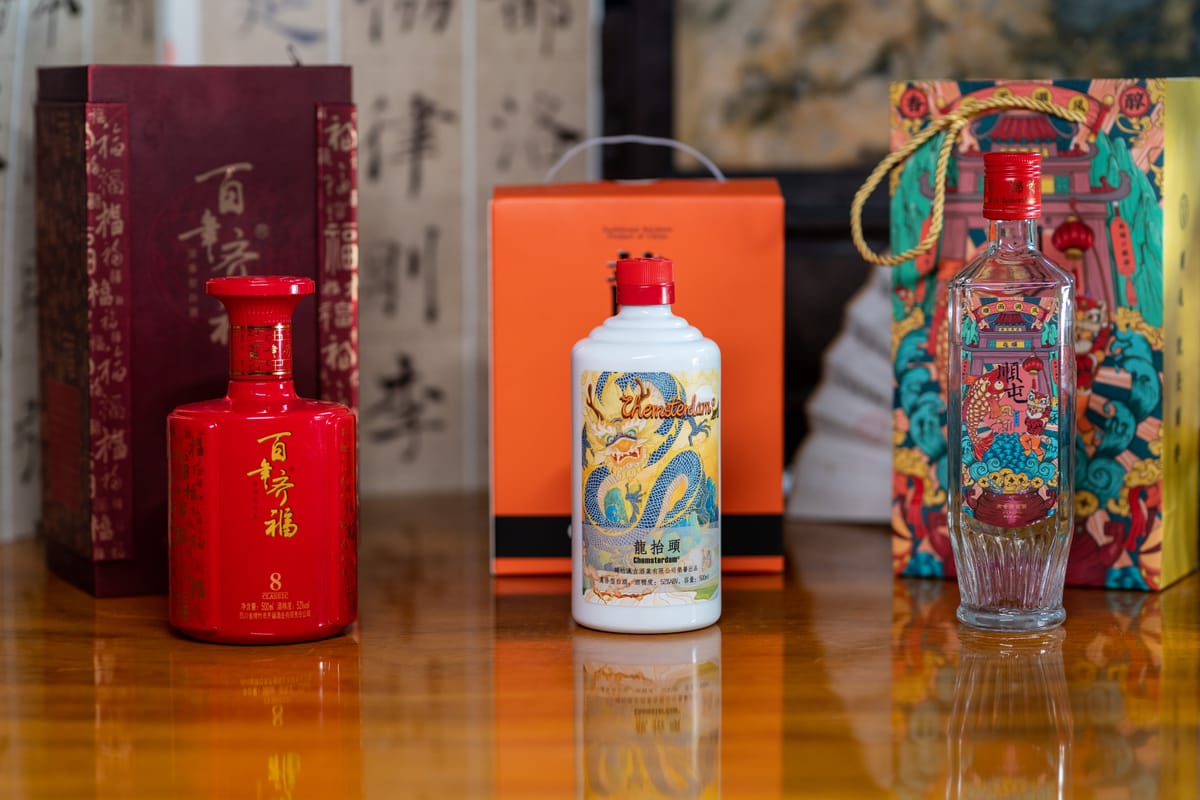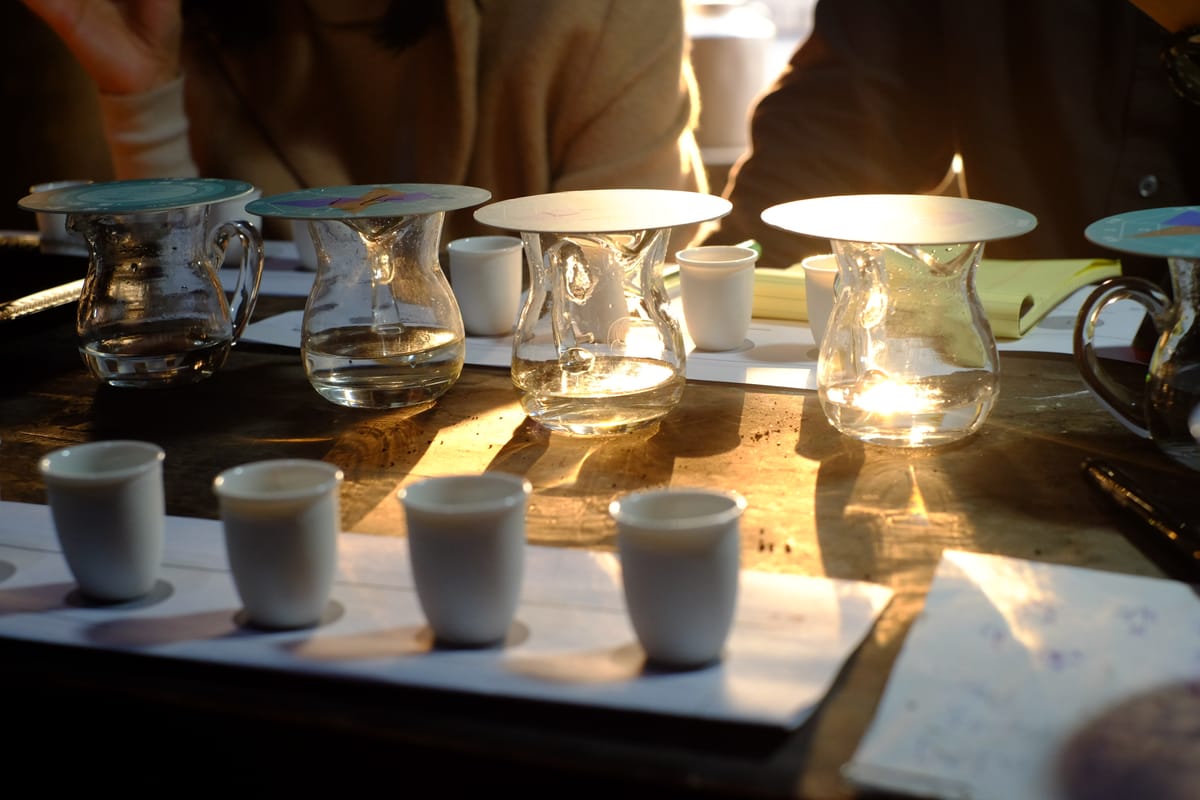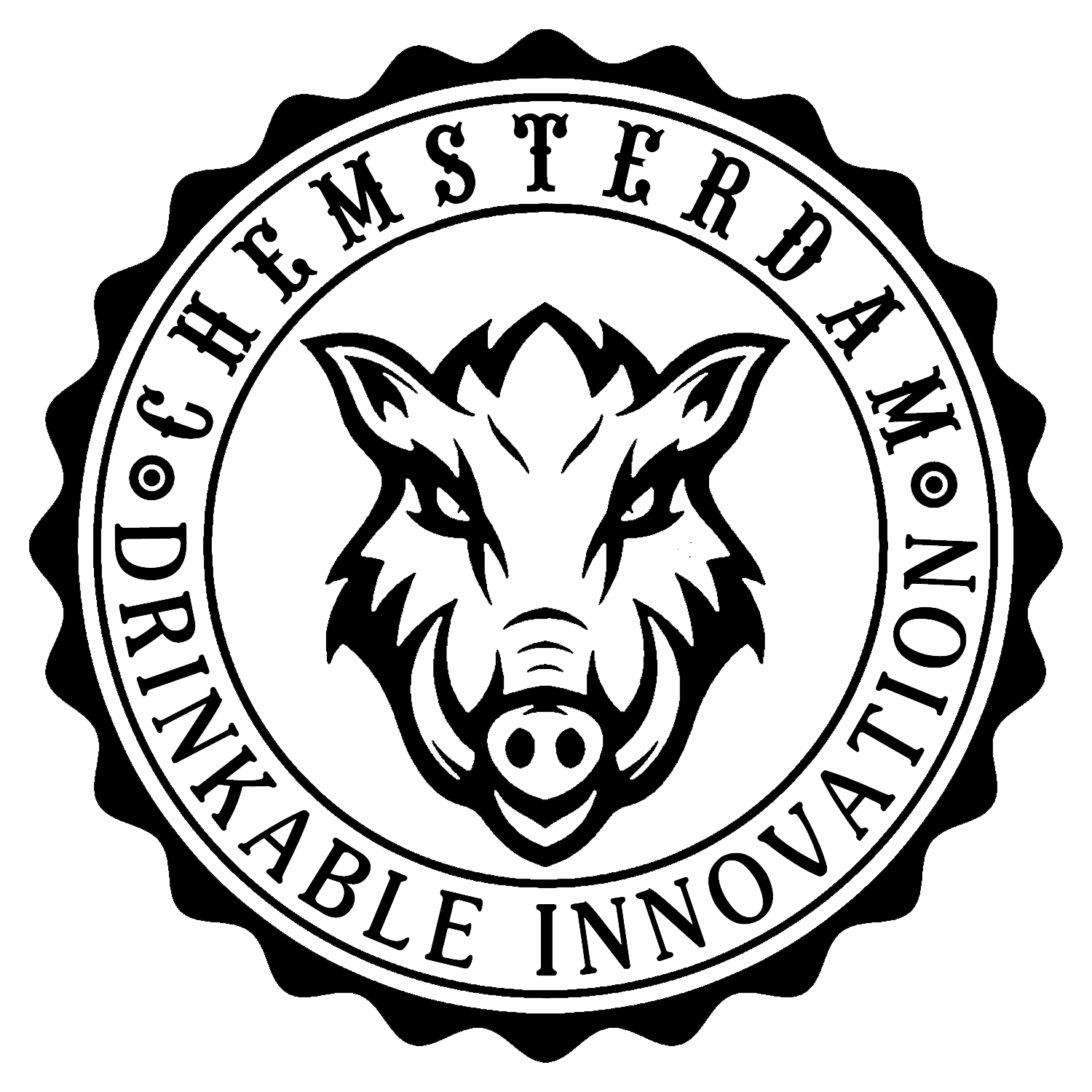Taxonomy of Alcoholic Beverages

Forewords
The current classification of distilled spirits faces two significant issues: 1) The classification of spirits does not adhere to the principles of taxonomy; 2) The existing system fails to include a broader range of spirits within its framework. For instance, Baijiu, which is the most widely produced and consumed distilled spirit in the world, lacks a clear categorization in the global taxonomy of alcoholic beverages. The question of where Baijiu should be placed within this system remains unanswered by the current structure. At the same time, Gin is actually almost the same as Jenever, but it seems Gin and Jenever have been considered totally different things. According to taxonomic research, Turkish Raki is actually a close relative to Gin, from the perspective of production process and method of adding flavors to the beverages.
Just as the establishment of a biological taxonomy allows scientists to classify any newly discovered species, aiding in the understanding of that species, a near-perfect framework for classifying alcoholic beverages must also meet the rigorous demands of taxonomy. This framework should serve several key purposes (Ohl, M. 2007):
- Purposes of Taxonomy:
- Creating and maintaining a comprehensive collection: This involves systematically gathering and organizing all known types of alcoholic beverages.
- Differentiating between species (or types): The framework should clearly distinguish between different types of spirits based on their unique characteristics.
- Identification and diagnosis of species and genera: It should allow for the precise identification and categorization of both well-known and lesser-known spirits, similar to how species and genera are classified in biology.
- Naming and describing species and genera: The framework should provide a standardized system for naming and describing each type of spirit, ensuring consistency and clarity.
- Outcomes of Taxonomy:
- Description: Providing detailed descriptions of each type of spirit, including its origin, production process, and distinguishing features.
- Identification: Facilitating the accurate identification of spirits, enabling experts and consumers alike to recognize and differentiate between them.
- Nomenclature: Establishing a clear and consistent naming convention that reflects the unique attributes and cultural significance of each spirit.
- Classification: Developing a robust and logical classification system that groups spirits in a way that reflects their similarities and differences, while also allowing for the inclusion of new discoveries.
By adhering to these principles, a comprehensive and scientifically sound classification system for alcoholic beverages can be developed. This would not only enhance our understanding and appreciation of the diverse world of spirits but also ensure that important spirits like Baijiu find their rightful place within the global taxonomy. In order to understand more about how flavors are formed in different drinks produced in different areas, we need to use a more scientific frame work to categorise alcoholic drinks in the world.
Clarification
The development of various alcoholic beverages might have occurred independently across different regions and eras. However, when we examine the methods used to produce these beverages, we often find astonishing similarities in the innovations and creations that emerged from diverse cultures. This observation offers a unique perspective on how humans have approached similar challenges, suggesting that solutions to these problems may exhibit temporal precedence, correlation, independence, or even remarkable resemblance.
In this context, the time and place where a particular method or beverage was developed become secondary attributes, rather than primary ones. For example, Japanese sake and French wine are, at their core, very similar—both are fermented beverages, with the primary difference being the raw materials used. Other differences, such as the place of production, types of fermentation agents, filtration methods, and aging containers, are variations on a common theme, showcasing the analogous approaches taken in different cultures.
Thus, reclassifying alcoholic beverages based on their production methods rather than their geographic or cultural origins can provide deeper insights into the development of these drinks and highlight the shared characteristics of human innovation. These commonalities could be the result of coincidence, a shared human ancestry, or a reflection of humanity's universal problem-solving strategies. By focusing on the similarities in the processes rather than the differences in origin, we gain a better understanding of the interconnectedness of human cultures and the universal nature of invention.
The Methodology of Creating a Framework of Taxonomy of Alcoholic Drinks
Naming
According to European spirits naming conventions, the production process determines the category of the spirit. Example 1: Same material but different production process: Fermented grape mash is filtered to be wine, and wine is distilled to be brandy, while the mash is steamed and concentrated to be grappa. Example 2: Different material but same production process: We use potato peels, or sugar beets, or any grain to produce vodka.
In the same logic, Brandy is the same type of drink as Slivovitz, they are the same kind of spirit, which is a distillates from fruit. However, it is weird to say that Slivovitz is a plum brandy, or to say Brandy is a grape Slivovitz.
Naming should also respect the history of a drink, but we can categorise the drinks into the same family.
Going Deeper with Production
The production is involved with material, fermentation, and aging, for spirits, there is one more process called distillation. If we unfold these main sections of the production, we can form a Neural Networks of alcoholic drinks.

According to this frame work, any alcoholic drinks can find its family. The goal of PANDA Framework is to fix the problems of categorisation of alcoholic drinks mentioned in the beginning of forewords.

General Production Process of Alcoholic Drinks
Every alcoholic beverage is made up of water, alcohol, and flavor/aroma compounds. The primary aim of producing alcoholic drinks is to create alcohol, while bacteria and yeast contribute to the development of certain aromatic and flavor compounds. This is a highly complex microbiological process that requires careful management and extensive experience to ensure it can be consistently replicated, maintaining the stability of both quality and flavor.

PANDA Taxonomy of Alcoholic Drinks/Beverages
- Material supplying carbohydrates:
- Plant based: grain, fruit, and other.
- Animal based: honey, other
- Fermentation agents:
- pure
- wild
- Fermentation environment:
- isolated
- relative environmental
- The physical state of the fermentation substrate:
- Liquid
- Semi-Solid
- Solid
- Distillation
- Heating method: Boiling/Steaming
- Adding flavors/Not
- Aging
- Obtaining flavor solely through natural aging
- Obtaining flavor and colour from aging and container
PS: In this context, the transfer of aroma and color from the container to the spirit during the aging process is characterized as a natural and passive means of enhancing the beverage’s color and flavor. This stands in contrast to the intentional addition of caramel color used to achieve uniformity across different batches of whisky. The key distinction is that the acquisition of color and aroma as a byproduct of essential production processes does not qualify as the addition of external color or flavor. It is only when a distinct procedure is implemented with the specific intent of altering the color or flavor that it can be considered an exogenous modification.
According to the explanation above, there are theoretically 320 kinds of alcoholic drinks.
Application of PANDA Taxonomy of Alcoholic Drinks
Based on the aforementioned classification logic, whiskey can be described as follows:
Analysis of Whiskey
- Material Supplying Carbohydrates:
- Plant-Based: The primary raw materials for whiskey are grains such as barley, corn, rye, and wheat.
- Fermentation Agents:
- Pure Fermentation: This refers to the use of selectively cultured yeast strains for fermentation, which allows for precise control over flavor and quality.
- Fermentation Environment:
- Typically, fermentation is conducted in an isolated environment to better regulate factors such as temperature, humidity, and microbial activity, thereby preventing external contamination.
- Distillation:
- Distillation: Whiskey must undergo distillation, a process that concentrates and purifies the fermented liquid. This typically involves at least two rounds of distillation.
- Boiling/Steaming:
- Boiling/Steaming: Prior to fermentation, grains undergo a mashing process, which often involves boiling or steaming to convert starches into fermentable sugars.
- Adding Flavors:
- No Flavor Additives: Traditional whiskey production does not involve the addition of external flavoring agents. All flavors are derived from the raw materials, fermentation, distillation, and aging processes.
- Aging:
- Flavor and Color from Aging and the Container: Whiskey must be aged in oak barrels, typically for a minimum of three years. The oak imparts unique color, flavor, and aroma to the whiskey.
Summary
Whiskey is a distilled spirit made primarily from grains, fermented in an isolated environment using pure yeast strains, and then distilled multiple times. It is aged in oak barrels, where it acquires its distinctive flavor, aroma, and color. No external flavor additives are used in its production; all characteristics are derived from the quality of the ingredients, the distillation process, and the aging in oak.
Based on the aforementioned classification logic, gin can be described as follows:
Analysis of Gin
- Material Supplying Carbohydrates:
- Plant-Based: The primary raw materials for gin typically include grains such as barley, corn, or wheat, which are used to produce a neutral alcohol base.
- Fermentation Agents:
- Pure Fermentation: The fermentation process employs selectively cultured yeast strains to convert the sugars from the grains into alcohol, ensuring consistent flavor and quality.
- Fermentation Environment:
- Fermentation usually occurs in an isolated environment to control factors such as temperature and microbial activity, preventing contamination and ensuring a pure alcohol base.
- Distillation:
- Distillation: The fermented alcohol is distilled to produce a neutral spirit, which is then redistilled with botanicals, most notably juniper berries, to impart gin's characteristic flavor.
- Boiling/Steaming:
- Boiling/Steaming: In the production of gin, boiling or steaming may be used during the distillation process to extract flavors from the botanicals added to the neutral spirit.
- Adding Flavors:
- Adding Flavors: Gin is distinct in that it requires the addition of botanicals and flavoring agents, most importantly juniper berries, along with other herbs, spices, and fruits, which are infused during or after the distillation process.
- Aging:
- No Aging Required: Unlike whiskey, gin does not typically require aging in barrels. However, some gins may be aged briefly in barrels to add complexity, though this is not a defining characteristic of most gins.
Summary
Gin is a distilled spirit that starts with a neutral alcohol base made from grains, which is fermented in an isolated environment using pure yeast strains. The neutral spirit is then redistilled with botanicals, primarily juniper berries, to impart its distinctive flavor. Unlike whiskey, gin does not require aging, and its unique flavor profile is largely derived from the botanicals and flavoring agents added during the distillation process.
Based on the aforementioned classification logic, jenever can be described as follows:
Analysis of Jenever
- Material Supplying Carbohydrates:
- Plant-Based: The primary raw materials for jenever include grains such as barley, rye, and corn. These grains are used to produce a malt wine base, which is essential for traditional jenever.
- Fermentation Agents:
- Pure Fermentation: The grains undergo fermentation with selectively cultured yeast strains, which ensures a controlled and consistent production of alcohol.
- Fermentation Environment:
- Fermentation typically takes place in an isolated environment, allowing precise control over temperature, humidity, and microbial activity, ensuring the purity of the malt wine base.
- Distillation:
- Distillation: Jenever involves distillation of the fermented grain mash to produce malt wine, which is then distilled again with juniper berries and other botanicals to achieve the characteristic flavor of jenever.
- Boiling/Steaming:
- Boiling/Steaming: The grains are mashed, which often involves boiling to convert the starches into fermentable sugars before fermentation.
- Adding Flavors:
- Adding Flavors: Juniper berries are a mandatory flavoring component of jenever, similar to gin. Other botanicals may also be added during distillation to enhance the flavor profile.
- Aging:
- Aging Options: Jenever can be aged or unaged. Young jenever (jonge jenever) is typically not aged, while old jenever (oude jenever) is often aged in wooden barrels, which imparts additional flavor and color from the barrel.
Summary
Jenever is a traditional distilled spirit made from grains such as barley, rye, and corn, which are fermented in an isolated environment using pure yeast strains. The fermented mash is distilled to produce malt wine, which is then redistilled with juniper berries and other botanicals to create jenever's unique flavor. Jenever may be aged in barrels, particularly for old jenever, where it gains additional depth and complexity from the wood. Unlike gin, jenever has a distinct malt wine base, making it a precursor to modern gin with a more robust and grain-forward flavor profile.
Based on the aforementioned classification logic, baijiu can be described as follows:
Analysis of Baijiu
- Material Supplying Carbohydrates:
- Plant-Based: The primary raw materials for baijiu are grains such as sorghum, rice, wheat, barley, and corn. These grains provide the necessary starches that are converted into sugars and then fermented.
- Fermentation Agents:
- Wild Fermentation: Baijiu typically uses a fermentation starter called qu (曲), which contains a mixture of wild yeast, bacteria, and molds. This natural fermentation process is a key factor in developing baijiu's complex flavors.
- Fermentation Environment:
- Relative Environmental Fermentation: Fermentation occurs in open pits or clay jars, where the environment and local microbial flora significantly influence the fermentation process. This exposure to the local environment is crucial to baijiu's unique regional characteristics.
- Distillation:
- Distillation: After fermentation, baijiu undergoes a distillation process, usually through a traditional pot still or a similar apparatus. This process concentrates the alcohol and further develops the flavor profile.
- Boiling/Steaming:
- Boiling/Steaming: The grains are typically steamed before fermentation. This step gelatinizes the starches, making them more accessible for fermentation.
- Adding Flavors:
- No Flavor Additives: Traditional baijiu does not include the addition of external flavoring agents. All flavors are derived from the raw materials, fermentation, distillation, and aging processes.
- Aging:
- Aging Options: Baijiu can be aged in ceramic jars or underground pits, allowing it to mature and develop deeper, more complex flavors. The aging process also helps to mellow the alcohol's harshness.
Summary
Baijiu is a traditional Chinese distilled spirit made from grains such as sorghum, rice, wheat, barley, and corn. The fermentation process relies on qu, a fermentation starter that introduces wild yeast and bacteria, and typically occurs in open pits or clay jars, allowing for environmental influences. The fermented mash is then distilled to produce baijiu, which may be aged in ceramic jars or underground pits to develop its distinctive flavor. Unlike some other spirits, baijiu's unique and complex flavor profile is entirely derived from its raw materials, traditional fermentation methods, and aging processes, without the addition of external flavoring agents.
Here is a comparison table for Whisky, Gin, Jenever, and Baijiu:
| Category | Whisky | Gin | Jenever | Baijiu |
|---|---|---|---|---|
| Primary Raw Materials | Grains (Barley, Corn, Rye, Wheat) | Grains (Barley, Corn, Wheat) | Grains (Barley, Rye, Corn) | Grains (Sorghum, Rice, Wheat, Corn) |
| Fermentation Agents | Pure yeast | Pure yeast | Pure yeast | Wild fermentation (using qu) |
| Fermentation Environment | Isolated (controlled environment) | Isolated (controlled environment) | Isolated (controlled environment) | Relative environmental (open pits, clay jars) |
| Distillation | Yes (typically multiple distillations) | Yes (redistillation with botanicals) | Yes (distilled with juniper berries) | Yes (traditional pot stills or similar) |
| Boiling/Steaming | Yes (for mashing grains) | Yes (for botanical extraction) | Yes (for mashing grains) | Yes (for steaming grains) |
| Adding Flavors | No (flavors from raw materials and aging) | Yes (botanicals like juniper berries) | Yes (juniper berries and other botanicals) | No (flavors from raw materials and aging) |
| Aging | Required (typically in oak barrels) | Not required (some gins may be aged) | Optional (young or old jenever) | Optional (aged in ceramic jars or underground pits) |
| Flavor Profile | Derived from grains, distillation, and aging in oak barrels | Derived from botanicals, especially juniper berries | Derived from malt wine, juniper berries, and aging (if applicable) | Derived from grains, wild fermentation, and aging (if applicable) |
| Typical Alcohol Content | 40-50% ABV | 37.5-50% ABV | 30-48% ABV | 35-60% ABV |
| Geographical Origin | Scotland, Ireland, USA, Canada | United Kingdom | Netherlands, Belgium | China |
This table highlights the key similarities and differences between these four types of spirits, focusing on their production processes, ingredients, and characteristics.
In this case, we can analyse all kinds of drinks.
Another Comparative Research between Wine, Beer, Brandy, Grappa and Whisky
Here is an analysis and comparison of Wine, Beer, Brandy, Grappa, and Whisky based on their production processes, ingredients, and characteristics:
| Category | Wine | Beer | Brandy | Grappa | Whisky |
|---|---|---|---|---|---|
| Primary Raw Materials | Grapes | Grains (Barley, Wheat, Corn, etc.) | Grapes (specifically wine) | Grape pomace (skins, seeds, stems) | Grains (Barley, Corn, Rye, Wheat) |
| Fermentation Agents | Wild or pure yeast | Pure yeast | Wild or pure yeast (from wine) | Pure yeast | Pure yeast |
| Fermentation Environment | Typically in tanks or barrels | Typically in tanks | In tanks or barrels (as wine) | In tanks | Isolated (controlled environment) |
| Distillation | No | No | Yes (from wine) | Yes (from grape pomace) | Yes (typically multiple distillations) |
| Boiling/Steaming | No | Yes (boiling during brewing) | No (grapes are fermented, then distilled) | Yes (pomace is distilled) | Yes (boiling during mashing) |
| Adding Flavors | No (flavor comes from grapes and aging) | No (flavor comes from hops and grains) | No (flavor comes from grapes and aging) | No (flavor from pomace and aging) | No (flavor comes from grains and aging) |
| Aging | Optional (in barrels for some types) | Optional (for certain beers) | Required (typically in oak barrels) | Optional (aged in wood barrels) | Required (in oak barrels) |
| Flavor Profile | Fruity, tannic, and/or complex depending on grape variety and aging | Malty, hoppy, and/or fruity, depending on grain and hops | Complex, fruity, and rich, influenced by grape variety and aging | Earthy, fruity, and robust, with flavors from grape pomace and aging | Rich, smoky, and complex, influenced by grains and oak aging |
| Typical Alcohol Content | 9-16% ABV | 4-12% ABV | 35-60% ABV | 35-60% ABV | 40-50% ABV |
| Geographical Origin | Global (France, Italy, Spain, etc.) | Global (Germany, Belgium, USA, etc.) | France, Spain, Italy | Italy | Scotland, Ireland, USA, Canada |
Analysis and Comparison
- Raw Materials:
- Wine and Brandy both start with grapes as the primary raw material. Brandy is essentially distilled wine, making it a higher-alcohol product with more concentrated flavors.
- Beer and Whisky share grains as their primary raw materials, though the grains used and the processing methods differ significantly.
- Grappa is unique in that it uses grape pomace, the byproduct of winemaking, as its raw material, giving it a distinct, earthy flavor.
- Fermentation:
- All these beverages undergo fermentation, but only Brandy, Grappa, and Whisky are distilled afterward to increase their alcohol content.
- Wine and Beer are fermented and then aged or consumed directly, depending on the type and style.
- Distillation:
- Brandy, Grappa, and Whisky undergo distillation, which is the key step that differentiates them from wine and beer in terms of alcohol content and flavor concentration.
- Aging:
- Brandy and Whisky are both aged in barrels, typically oak, which imparts additional flavors such as vanilla, spice, and smokiness.
- Grappa may be aged, but it is often consumed unaged, where it retains a more intense, raw flavor.
- Wine may or may not be aged, with the process used to develop complexity and depth in higher-end wines.
- Beer can be aged (especially in the case of certain strong ales), but this is less common.
- Flavor Profile:
- Wine has a wide range of flavors depending on the grape variety, fermentation, and aging process. It is generally fruity, with possible notes of tannins, herbs, and spices.
- Beer flavors range from malty to hoppy, depending on the grains and hops used, with a lower alcohol content that makes it more sessionable.
- Brandy is rich and complex, often carrying deep fruit and oak flavors from the wine and barrel aging.
- Grappa is robust and intense, with flavors derived from the grape pomace and sometimes the wood if aged.
- Whisky offers a diverse range of flavors, including smokiness, sweetness, and spice, heavily influenced by the grains used and the aging process in oak barrels.
- Alcohol Content:
- Wine and Beer have lower alcohol content, making them more suitable for casual consumption.
- Brandy, Grappa, and Whisky have higher alcohol content, often consumed in smaller quantities and appreciated for their complex flavors.
Conclusion
Each of these beverages offers a unique experience based on their raw materials, fermentation, distillation, and aging processes. Wine and Beer are less processed, focusing on the flavors derived from their primary ingredients, while Brandy, Grappa, and Whisky undergo further processing to concentrate and develop their flavors, resulting in a richer, more complex drinking experience.
Reference
Ohl, M. (2007). 4 Principles of Taxonomy and Classification: Current Procedures for Naming and Classifying Organisms. 收入 W. Henke & I. Tattersall, Handbook of Paleoanthropology (页 141–166). Springer Berlin Heidelberg. https://doi.org/10.1007/978-3-540-33761-4_4

